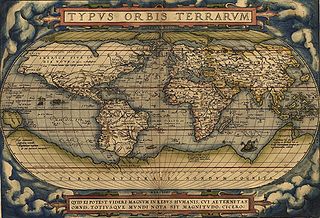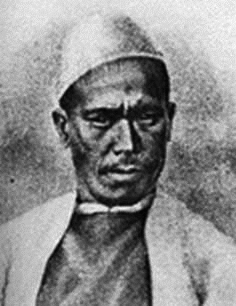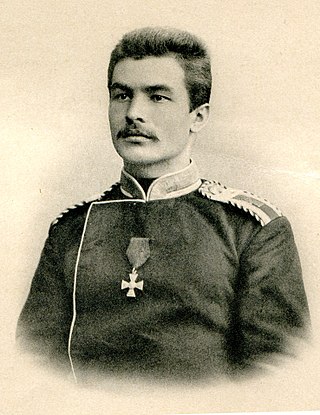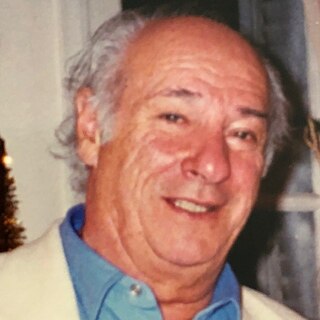Related Research Articles

Geographical exploration, sometimes considered the default meaning for the more general term exploration, refers to the practice of discovering remote lands and regions of the planet Earth. It is studied by geographers and historians.

Nain Singh, also known as Nain Singh Rawat, was one of the first Indian explorers employed by the British to explore the Himalayas and Central Asia. He came from the Johar Valley in Kumaon. He surveyed the trade route through Ladakh to Tibet, determined the location and altitude of Lhasa in Tibet, and surveyed a large section of Brahmaputra. He walked "1,580 miles, or 3,160,000 paces, each counted."

The Age of Discovery or the Age of Exploration, part of the early modern period and largely overlapping with the Age of Sail, was a period from approximately the 15th century to the 17th century, during which seafarers from a number of European countries explored, colonized, and conquered regions across the globe. The extensive overseas exploration, particularly the European colonisation of the Americas, with the Spanish and Portuguese at the forefront, later joined by the Dutch, English, and French, marked an increased adoption of colonialism as a government policy in several European states. As such, it is sometimes synonymous with the first wave of European colonization.

Johan Gunnar Andersson was a Swedish archaeologist, paleontologist and geologist, closely associated with the beginnings of Chinese archaeology in the 1920s.

The Yarlung Tsangpo Grand Canyon, also known as the Yarlung Zangbo Grand Canyon, the Tsangpo Canyon, the Brahmaputra Canyon or the Tsangpo Gorge, is a canyon along the Yarlung Tsangpo River in Tibet Autonomous Region, China. It is the deepest canyon in the world, and at 504.6 kilometres (313.5 mi) is slightly longer than the Grand Canyon in the United States, making it one of the world's largest. The Yarlung Tsangpo originates near Mount Kailash and runs east for about 1,700 kilometres (1,100 mi), draining a northern section of the Himalayas before it enters the gorge just downstream of Pei, Tibet, near the settlement of Zhibe. The canyon has a length of about 240 kilometres (150 mi) as the gorge bends around Mount Namcha Barwa and cuts its way through the eastern Himalayan range. Its waters drop from about 2,900 metres (9,500 ft) near Pei to about 1,500 metres (4,900 ft) at the end of the Upper Gorge where the Po Tsangpo River enters. The river continues through the Lower Gorge to the Indian border at an elevation of 660 metres (2,170 ft). The river then enters Arunachal Pradesh and eventually becomes the Brahmaputra.

Pyotr Kuzmich Kozlov was a Russian and Soviet traveller and explorer who continued the studies of Nikolai Przhevalsky in Mongolia and Tibet.

The location of Tibet, deep in the Himalaya mountains, made travel to Tibet extraordinarily difficult at any time, in addition to the fact that it traditionally was forbidden to all western foreigners. The internal and external politics of Tibet, China, Bhutan, Assam, and the northern Indian kingdoms combined rendered entry into Tibet politically difficult for all Europeans. The combination of inaccessibility and political sensitivity made Tibet a mystery and a challenge for Europeans well into the 20th century.

Michel Georges Francois Peissel was a French ethnologist, explorer and author. He wrote twenty books mostly on his Himalayan and Tibetan expeditions. Peissel was an emeritus member of the Explorers Club and a Fellow of the Royal Geographical Society.

Hong Kong Cemetery, formerly Hong Kong Cemetery and before that Hong Kong Colonial Cemetery, is one of the early Christian cemeteries in Hong Kong dating to its colonial era beginning in 1845. It is located beside the racecourse at Happy Valley, along with the Jewish Cemetery, Hindu Cemetery, Parsee Cemetery, St. Michael's Catholic Cemetery and the Muslim Cemetery.

The Yarlung Tsangpo, also called Yarlung Zangbo and Yalu Zangbu River is the upper stream of the Brahmaputra River located in the Tibet Autonomous Region, China. It is the longest river of Tibet and the fifth longest in China. The upper section is also called Dangque Zangbu meaning "Horse River."

The baiji is a possibly extinct species of freshwater dolphin native to the Yangtze river system in China. It is thought to be the first dolphin species driven to extinction due to the impact of humans. This dolphin is listed as “critically endangered: possibly extinct” by the IUCN, has not been seen in 40 years, and several surveys of the Yangtze have failed to find it. In China, the species is also called the Chinese river dolphin, Han river dolphin, Yangtze dolphin and whitefin dolphin. Nicknamed the "Goddess of the Yangtze", it was regarded as the goddess of protection by local fishermen and boatmen. It is not to be confused with the Chinese white dolphin or the finless porpoise. This is the only species in the genus Lipotes.

Frank Nicholas Meyer was a United States Department of Agriculture explorer who traveled to Asia to collect new plant species. The Meyer lemon was named in his honor.

Tibet was a de facto independent state in East Asia that lasted from the collapse of the Manchu-led Qing dynasty in 1912 until its annexation by the People's Republic of China in 1951.
The Batang uprising was an uprising by the Khampas of Kham against the assertion of authority by Qing China.

Christoph Baumer is a Swiss explorer and historian of Central Asia. Starting in 1984, he has conducted explorations in Central Asia, China, Tibet and the Caucasus, the results of which have been published in numerous books, scholarly publications, TV and radio programs.

Antwerp Edgar Pratt FRGS was a Victorian naturalist, explorer, author, and renowned collector of plants, insects, and other animals. Species named for Pratt include three mammals and two reptiles. Two of his sons and a nephew were also collectors.
The Bailey–Morshead exploration of the Tsangpo Gorge was an unauthorised expedition by Frederick Bailey and Henry Morshead in 1913 which for the first time established the definite route by which the Tsangpo River reaches the sea from north of Himalaya, through the Tsangpo Gorge.

The Mekong expedition of 1866–1868, conceived and promoted by a group of French colonial officers and launched under the leadership of captain Ernest Doudard de Lagrée, was a naval exploration and scientific expedition of the Mekong River on behalf of the French colonial authorities of Cochinchina. Its primary objective, besides scientific documentation, mapping, and the mission civilisatrice, was an assessment of the river's navigability in order to link the delta region and the port of Saigon with the riches of southern China and upper Siam. Ambitions were to turn Saigon into a successful commercial center such as British controlled Shanghai at the mouth of the Yangtze River.

"The Purple Lotus Buddhist" is a short story by Pu Songling collected in Strange Stories from a Chinese Studio or Liaozhai Zhiyi (1740). It revolves around a Chinese man battling a life-threatening illness. The tale was included in the fourth volume of Sidney Sondergard's translation of Liaozhai published in 2010.

Tamotsu Nakamura, FRGS, is a Japanese explorer, alpinist, photographer and author. Since 1990, he has explored the mountainous areas between the Himalayas and the Sichuan basin; which he documents in photographs. He is a leading authority on the Alps of Tibet, the south-eastern sector of the Tibetan high plateau.
References
- ↑ Susan Jakes, "Leaving It Better Than He Found It."
- 1 2 3 Kolesnikov, Sonia (May 20, 2007). "Interview: Wong How-man, Hong Kong explorer and preservationist". scmp.com. Retrieved January 28, 2020.
- ↑ "How We Began". cers.org.hk. Retrieved January 28, 2020.
- ↑ Wong How Man, Exploring the Yangtze: China's Longest River (China Books & Periodicals, 1989), ISBN 0-8351-2185-2
- ↑ "Hanging coffins: China's mysterious sky graveyards". CNN Travel. 2017-07-07. Retrieved 2017-09-07.
- ↑ Keiko Hagihara Bang and Wong How Man (Executive Producers), Toby Macdonald (Director) (21 April 2004). Mysterious Hanging Coffin of China (Documentary). Discovery Channel, NHK. Archived from the original on 2021-12-21. Retrieved 30 January 2019.
- ↑ Team claims to find new Yangtze source, usatoday.com
- ↑ Crossings (Documentary). Discovery Channel. Retrieved 28 April 2020.
- ↑ Wong How Man, From Manchuria to Tibet (Odyssey Publishing, 1998), ISBN 962-217-098-6
- ↑ (Documentary). Discovery Channel. Retrieved April 28, 2020.
- ↑ Wong How Man, Islamic Frontiers of China (Scorpion Publishing, 1990), ISBN 0-905906-83-7
- ↑ Richard Quest (Anchor) (25 October 2007). Quest for Exploration (Documentary). CNN. Archived from the original on 2021-12-21. Retrieved 30 January 2019.
- ↑ Blythe Yee (March 10, 2006). A Conservationist Campaigns to Keep Tibet's Mastiffs Mean Wall Street Journal. Retrieved April 28, 2020
- ↑ Riz Khan (anchor) (10 October 2009). One on one with Wong How Man (Interview). Al-Jazeera TV. Retrieved 28 April 2020.
- ↑ Liu Yun, Classic of Mountains and Seas: Wong How-Man and 30 Years of CERS (Ding Ding, 2016), ISBN 978-986-93841-2-4